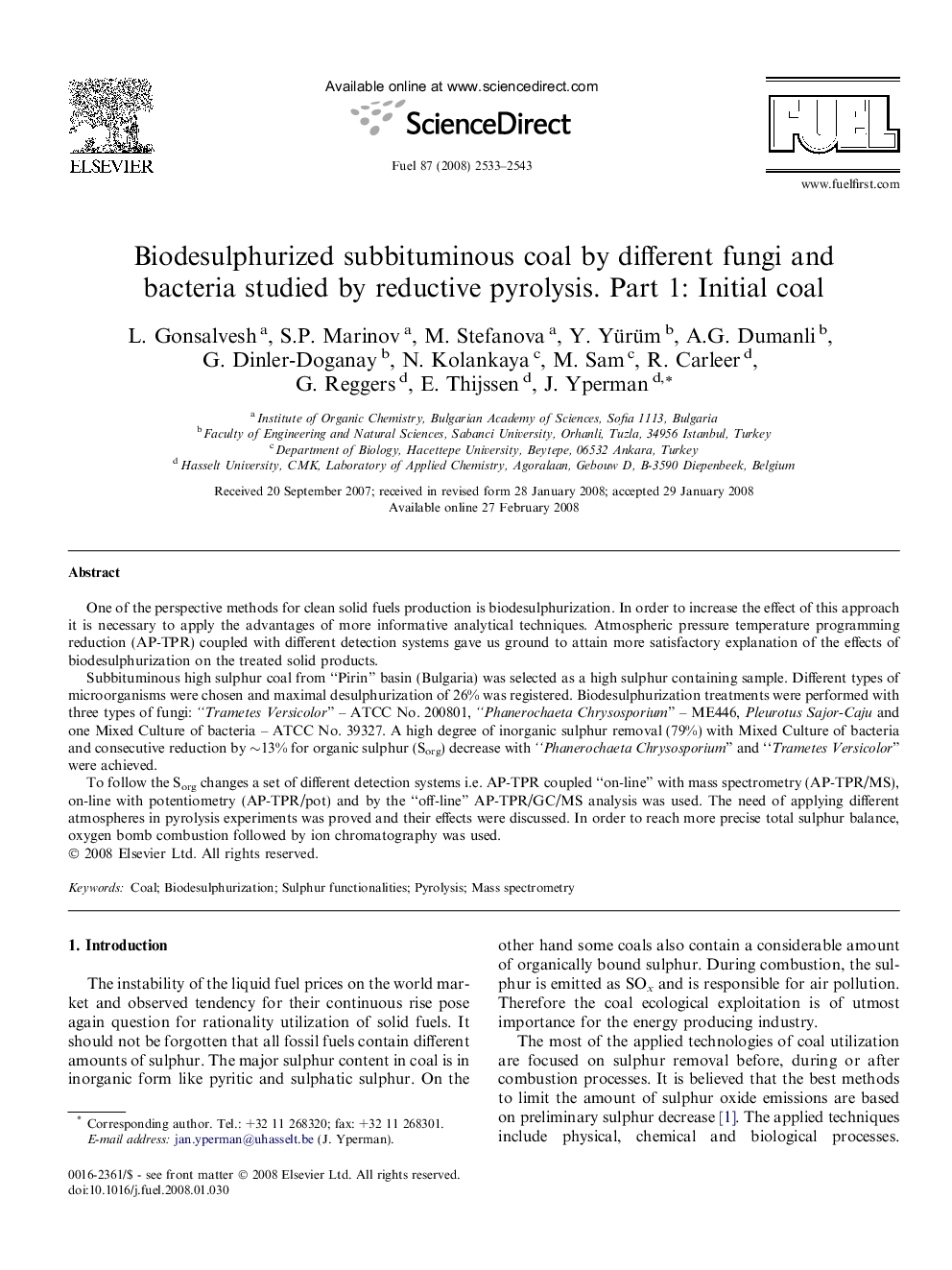| Article ID | Journal | Published Year | Pages | File Type |
|---|---|---|---|---|
| 207454 | Fuel | 2008 | 11 Pages |
One of the perspective methods for clean solid fuels production is biodesulphurization. In order to increase the effect of this approach it is necessary to apply the advantages of more informative analytical techniques. Atmospheric pressure temperature programming reduction (AP-TPR) coupled with different detection systems gave us ground to attain more satisfactory explanation of the effects of biodesulphurization on the treated solid products.Subbituminous high sulphur coal from “Pirin” basin (Bulgaria) was selected as a high sulphur containing sample. Different types of microorganisms were chosen and maximal desulphurization of 26% was registered. Biodesulphurization treatments were performed with three types of fungi: “Trametes Versicolor” – ATCC No. 200801, “Phanerochaeta Chrysosporium” – ME446, Pleurotus Sajor-Caju and one Mixed Culture of bacteria – ATCC No. 39327. A high degree of inorganic sulphur removal (79%) with Mixed Culture of bacteria and consecutive reduction by ∼13% for organic sulphur (Sorg) decrease with “Phanerochaeta Chrysosporium” and “Trametes Versicolor” were achieved.To follow the Sorg changes a set of different detection systems i.e. AP-TPR coupled “on-line” with mass spectrometry (AP-TPR/MS), on-line with potentiometry (AP-TPR/pot) and by the “off-line” AP-TPR/GC/MS analysis was used. The need of applying different atmospheres in pyrolysis experiments was proved and their effects were discussed. In order to reach more precise total sulphur balance, oxygen bomb combustion followed by ion chromatography was used.
